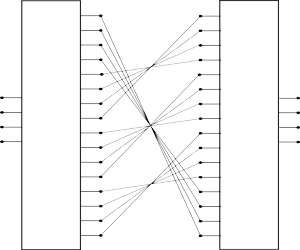Regular method of synthesis of substitute cryptographic constructions with maximum distance of nonlinearity
DOI:
https://doi.org/10.3103/S073527271203003XKeywords:
encryption, Boolean functions, algebraic normal form, affine codes, Hamming distance, m–shift, cyclic time shift, permutation, cyclic frequency shift, maximin optimality criterionAbstract
We propose a regular method of synthesis of optimal substitution cryptographic constructions — S-boxes, with a maximum distance of nonlinearity, and other cryptographic practically attractive properties. The presented method based on the m–shift operators, permutations, cyclic time shift, cyclic frequency shift.
References
- B. Ya. Ryabko and A. N. Fionov, Principles of Modern Cryptography and Steganography (Goryachaya Liniya–Telekom, Moscow, 2010) [in Russian].
- B. Sklar, Digital Communications. Fundamentals and Applications, 2nd ed. (Prentice-Hall, New Jersey, 2001).
- V. I. Dolgov, R. V. Oleinikov, I. V. Lisitskaya, et al., “Substitute Constructions of Modern Symmetric Block Ciphers,” Radioelektronni i kompyuterni systemy, No. 6, 89 (2009).
- M. I. Mazurkov, V. Ya. Chechelnytskyi, and K. K. Nekrasov, “Three-level cryptographic system for block data encryption,” Izv. Vyssh. Uchebn. Zaved., Radioelektron. 53 (7), 43 (2010) [Radioelectron. Commun. Syst. 53 (7), 376 (2010)], DOI: 10.3103/S0735272710070058.
- A. M. Trakhtman and V. A. Trakhtman, Theoretical Principles of Discrete Signals on Finite Intervals (Sov. Radio, Moscow, 1975) [in Russian].
- M. I. Mazurkov, Broadband Wireless Communications: Textbook for Students of Higher School (Nauka i Tekhnika, Odessa, 2010) [in Russian].
- R. E. Blahut, Theory and Practice of Error Control Codes (Addison-Wesley Publishing Company Inc., 1983).
- M. I. Mazurkov and M. Yu. Gerasimenko, “Fast Orthogonal Transforms Based on Perfect Binary Arrays,” Izv. Vyssh. Uchebn. Zaved., Radioelektron. 49 (9), 54 (2006); Radioelectron. Commun. Syst. 49 (9), 36 (2006).
- M. I. Mazurkov, V. Ya. Chechel’nitskii and P. Murr, “Information security method based on perfect binary arrays,” Izv. Vyssh. Uchebn. Zaved., Radioelektron. 51 (11), 53 (2008) [Radioelectron. Commun. Syst. 51 (11), 612 (2008)], DOI: 10.3103/S0735272708110095.

Downloads
Published
2012-03-03
Issue
Section
Research Articles

